
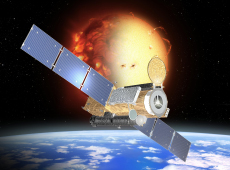
Courtesy: Akihiro Ikeshita
Q. If you compare the current status of your mission to mountaineering,
Slow ascent, but it looks like there is a cliff right beside us
Q. People, time, things: which of these would you like more of? Place in order of preference.
People, time, things
Q. What aspect of your mission do you want people to take note of? What is the selling point of your mission?
With three of the world’s most sophisticated telescopes, in a wide range of wavelengths, from visible light to x-rays, HINODE has been revealing a lot of new things about the Sun. With an optical telescope, the Sun looks so dynamic, you almost feel you are watching it from up close. The ability of HINODE to take solar magnetograms may help us solve the mystery of the (roughly 11-year) solar cycle.
Q. What is your priority in management?
In making a decision, I am mindful of being able to explain it to someone else. I pay attention to the relationship between the initial plan and the result. And I don’t worry about things I cannot do much about.
Q. What is your favorite genre of books? Do you have a favorite book?
I don’t have a special preference in genre, but if I have to choose one, I would say non-fiction. I like Saka no Ue no Kumo by Ryotaro Shiba, Ikirukoto Manabukoto by Heisuke Hironaka, Showa no Go by Masanori Esaki, and Hi ga Hashiru by Shitsuki Joe (author) and Tetsuo Aoki (illustrator).
Q. What is your motto, or favorite saying?
Being open-minded
Q. Do you have a message for visitors to this website?
It does not have to be the Sun, but please be fond of science. Intelligent life will be found beyond our solar system someday, and it will have its own science, too.
Related link: Solar Physics Satellite HINODE (SOLAR-B)

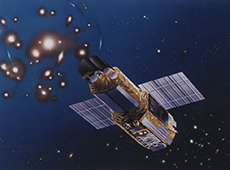
Q. If you compare the current status of your mission to mountaineering,
flat top of the mountain
being cautious not to fall from the flat top
sunny, but beneath us is a sea of clouds
Q. People, time, things: which of these would you like more of? Place in order of preference.
Time, time, people, things
Q. What aspect of your mission do you want people to take note of? What is the selling point of your mission?
Generation of scientific results and contribution to international science as an international orbiting astronomical observatory.
Q. What is your priority in management?
Hands-on management
Q. What is your favorite genre of books? Do you have a favorite book?
Historical novels. I really like the authors Ryotaro Shiba and Nanami Shiono.
Q. What is your motto, or favorite saying?
“... the boundless resourcefulness of nature, which so often leaves the most daring imagination of man far behind." (Bruno Rossi)
Q. Do you have a message for visitors to this website?
In the world of astrophysics, you cannot conduct hands-on experiments, and therefore it is essential to study space from many different aspects with various approaches. SUZAKU has been playing a significant role with X-rays, which can reveal the dynamism of the universe.
Related link: X-ray Astronomy Satellite SUZAKU (ASTRO-EII)

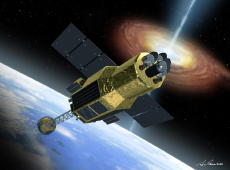
Courtesy: Akihiro Ikeshita
Q. If you compare the current status of your mission to mountaineering,
Q. People, time, things: which of these would you like more of? Place in order of preference.
People, time, things
Q. What aspect of your mission do you want people to take note of? What is the selling point of your mission?
The advanced scientific instruments we’ve developed, and the engineering that enabled them.
Q. What is your priority in management?
Managing the master schedule and the cost. Recognizing and taking prompt action when problems arise.
Q. What is your favorite genre of books? Do you have a favorite book?
Science books.
Q. What is your motto, or favorite saying?
All things happen for a reason.
Q. Do you have a message for visitors to this website?
We humans evolved to live in Earth’s dense atmosphere. We developed the science of astronomy using visible light. In the 20th century, however, we were able to leave the comforts of our planet’s atmosphere and travel to space. And we discovered that the universe is filled with light we cannot see with the naked eye – a type of light called X-rays. Observing X-rays, which are much ‘hotter’ than visible light, we discovered that space is a dynamic place, with a lot going on that we had no way of knowing about before. X-ray astronomy is a very new branch of science. JAXA is developing a cutting-edge X-ray astronomy satellite, called ASTRO-H, which will carry some highly original instruments. Once it is launched, we will be able to expect new information – results never before imagined – on a daily basis.
- Related link:
- X-ray Astronomy Satellite ASTRO-H
- ASTRO-H

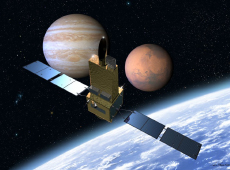
Courtesy: Akihiro Ikeshita
Q. If you compare the current status of your mission to mountaineering,
Q. People, time, things: which of these would you like more of? Place in order of preference.
People, time, things
Q. What aspect of your mission do you want people to take note of? What is the selling point of your mission?
Characteristically, despite the relatively small size of the satellite, we are aiming to achieve cutting-edge results by narrowing down the objectives of the observation.
Q. What is your priority in management?
I believe the most important thing is for the staff to be able to work smoothly. To ensure such an environment, when a problem has occurred, for example, I try to listen to the opinions of those working close to the scene, and make a decision quickly.
Also, I pay attention to sharing information within the project team, so that, regardless of their responsibilities, everyone can have an overview of what is going on within the team and understand the direction the project is moving in.
Q. What is your favorite genre of books? Do you have a favorite book?
I do not have a particular preference. I read books at random, but mainly historical and detective novels by Japanese authors. When reading novels by Ryotaro Shiba and Toyoko Yamasaki, I find myself comparing the worlds of the stories and my way of working. I also enjoy indulging myself in the mood of calmness when reading a novel by Jiro Asada.
The other day, I read a popular novel on antiquarian books and learned about the depth of the world of reading.
Q. What is your motto, or favorite saying?
Learn for yourself. Think for yourself. (This is the motto of my alma mater.)
Q. Do you have a message for visitors to this website?
The launch is approaching soon, and development is now at the climax stage.
Although a satellite itself may be just a piece of inorganic technology, I believe the passion of the makers gives it life. Please look forward to the launch!
Related link: Spectroscopic Planet Observatory for Recognition of Interaction of Atmosphere (SPRINT-A)
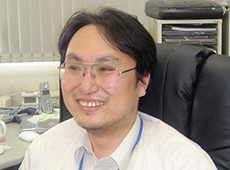
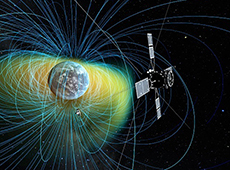
Q. If you compare the current status of your mission to mountaineering,
Q. People, time, things: which of these would you like more of? Place in order of preference.
Time, people, things
Q. What aspect of your mission do you want people to take note of? What is the selling point of your mission?
In geospace, the region of outer space near Earth, there is something called the Van Allen Radiation Belt, which captures a huge volume of highly charged energy particles that exceed mega electron volts. The relativistic electrons generate and vanish repeatedly, along with space storms caused by the disturbance of solar wind. The ERG mission aims to find out how the relativistic electrons are born and vanish, and how a space storm develops. Also, space storms and particles in the radiation belt, which are generated by the storms, can cause problems for satellites and also severely interfere with astronauts’ spacewalks. We believe that finding out how particles in the radiation zone are generated and predicting the particle variation can contribute not only to science in general but also specifically to our understanding of space weather. This will contribute to the safety of human activity in space. The ERG satellite is currently in preparation, with the aim of launching via Epsilon-2 in December 2015.
Q. What is your priority in management?
Communication. I think the most important thing is to be able to exchange opinions not only within the project team but also with personnel at private-sector manufacturers and other related businesses. This is because the production of a satellite involves more than a few people – probably more than a thousand – working on concept, design, production, testing, transportation, launch and operation. Being able to exchange opinions and have thorough discussion to everyone’s satisfaction allows smooth operations and leads to the success of the project. Even though, in reality, it can sometimes can be difficult to have a good discussion within a given time frame, I want to be always aware of the importance of communication.
Q. What is your favorite genre of books? Do you have a favorite book?
I enjoy reading books of many different genres, from science fiction to how-to’s. I used to read a lot of short-short science fiction stories by Shinichi Hoshi. Lately, I am in the mood for appreciating Japanese classics again.
Q. What is your motto, or favorite saying?
“Dream is alive” and “Man for others.” I encountered these words when I was a teenager. I would like to keep these sayings in mind, and always remember the fact that space exploration is achieved thanks to the support of many people and the sharing of a dream.
Q. Do you have a message for visitors to this website?
The ERG satellite is a bottom-up project among scientists at universities and research institutions in Japan. Taking advantage of the small size of the scientific satellite, our slogan is, “Launch to the target at the right time for us.” Teaming up with the Epsilon project team, we have fully devoted ourselves to satellite development and launch with only a three-year time frame. We are determined to achieve world-class results with the ERG satellite.
Related link: Exploration of energization and Radiation in Geospace (ERG)


















